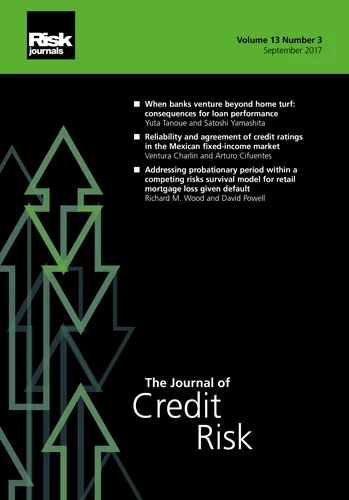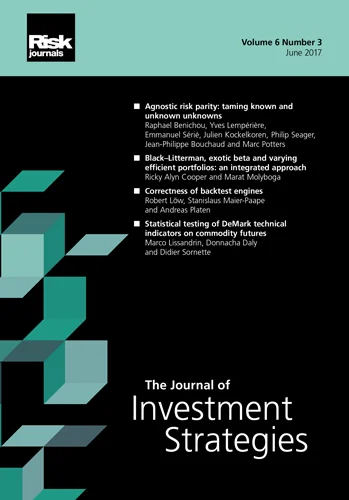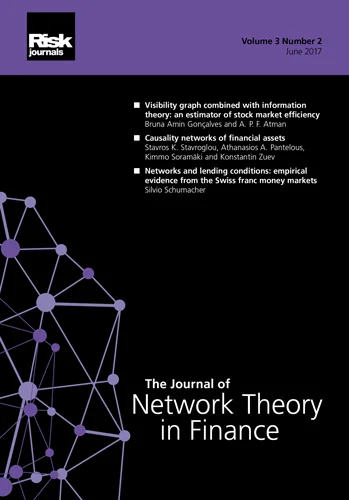Journal of Energy Markets
ISSN:
1756-3615 (online)
Editor-in-chief: Kostas Andriosopoulos
Volume 11, Number 3 (September 2018)
Special issue: Weather Derivatives
Editor's Letter
Weather derivatives offer a tool for hedging weather-related risk. Standardized weather derivatives on temperature have been traded at the CME for decades, and other weather-related financial contracts are popular over-the-counter products in energy markets. Recently, wind futures have been launched on the EEX and Nasdaq markets in Europe. Financial products offering protection against weather-related risk are particularly important for actors in energy markets, particularly in view of today’s gradual transition from fossil fuels to green energy production. Wind, sun and precipitation affect the supply side, while temperature impacts on demand. In addition, agriculture, as well as industries such as tourism and transportation, can be extremely vulnerable to weather risk.
In this special issue of The Journal of Energy Markets, we present four research papers on weather-related financial instruments. These papers offer analyses of weather variables such as wind, precipitation, temperature and hours of sunshine using new stochastic modeling techniques. Their application areas range from the pricing of derivatives to hedging risk using these derivatives.
Ragnhild C. Noven, Almut E. D. Veraart and Axel Gandy introduce a latent trawl process for modeling the temporal dependency of exceedances over a threshold in the issue’s first paper: “A latent trawl process model for extreme values”. Trawl processes are a new class of stochastic processes constructed from tracking a class of random fields along a temporally moving domain (a trawl), and here the authors apply them together with extreme value distributions. The authors’ hierarchical model is applied to rainfall and ozone data collected in the United Kingdom. This paper lays the foundation for further analysis of risk and hedging of risk in weather and environmental variables.
Our second paper, “Managing adverse temperature conditions through hybrid financial instruments” by Silvana Stefani, Enrico Moretto, Matteo Parravicini, Simone Cambiaghi, Adeyemi Sonubi, Gleda Kutrolli and Vanda Tulli, proposes a stochastic model for temperature data observed in Italy. The authors discuss the applicability of temperature options for farmers to protect themselves against harmful temperature conditions. As standardized products on the CME market are not relevant for local weather conditions in most situations, the authors view their temperature hedge as an insurance product, and they use methods from actuarial premium determination to compute the price. Their paper assesses the benefit of entering such contracts.
Wind and photovoltaic power production play an important role in the German electricity market. In our third paper, “Statistical analysis of photovoltaic and wind power generation” by Noor ’Adilah Ibrahim, we learn how the stochastic temporal dynamics of these types of power production can be modeled jointly. Some important features of these types of production are their seasonality functions and the dependency between the two, as well as the autoregressive time dependency and the non-Gaussianity of residuals. All in all, this paper presents a novel bivariate stochastic model that is suitable for analyzing quanto option pricing.
In the final paper of this issue, “On the spatial hedging effectiveness of German wind power futures for wind power generators”, Troels Sønderby Christensen and Anca Pircalabu study the applicability of the recently introduced wind power futures for hedging wind power production in Germany. The wind power generation for a multitude of parks across Germany is modeled using an autoregressive moving average–generalized autoregressive conditional heteroscedasticity (ARMA– GARCH) stochastic process, where dependencies on the wind power index are modeled using copulas. The effectiveness of wind power futures is studied from the point of view of quadratic hedging. It is demonstrated that wind farms in northern Germany benefit more than those in the south from variance reduction using these futures as hedges, where the quantitative effects depend on the risk premium and, indeed, on the copulas.
The authors in this issue of The Journal of Energy Markets present their findings in an engaging and accessible way, and it is our belief that these four papers will inspire further research into the topical and challenging area of weather derivatives.
Fred Espen Benth
University of Oslo
Papers in this issue
A latent trawl process model for extreme values
This paper presents a new model for characterizing temporal dependence in exceedances above a given threshold.
Managing adverse temperature conditions through hybrid financial instruments
This paper proposes temperature-based risk management using hybrid financial instruments built on weather derivatives.
Statistical analysis of photovoltaic and wind power generation
The author presents a comparison between maximal and daily average production of photovoltaic and wind energy based on a transmission system operator in Germany using statistical analysis with different seasonality functions.
On the spatial hedging effectiveness of German wind power futures for wind power generators
In this paper, the authors consider wind power utilization in thirty-one different locations in Germany.








